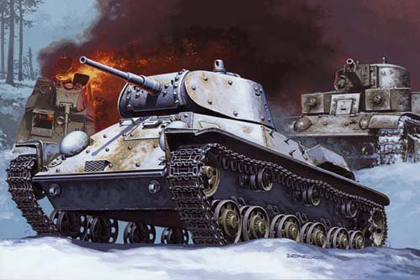This is the Tamiya 35 205 kit in 1/35 scale, of the ‘German Infantry Equipment set B – Mid/Late’.
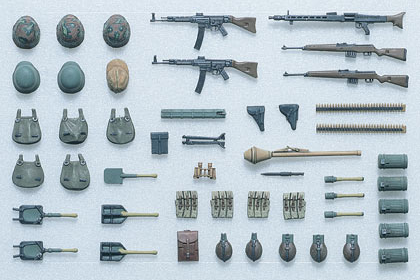
This is the Tamiya 35 205 kit in 1/35 scale, of the ‘German Infantry Equipment set B – Mid/Late’.

This is the Tamiya 35 204 kit in 1/35 scale, of the ‘German Infantry Equipment set A – Early/Mid’.
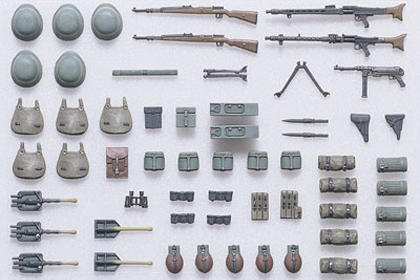
This is the Dragon 6096 kit in 1/35 scale, of the ‘Russian Tank Destroyer, SU-85M’.
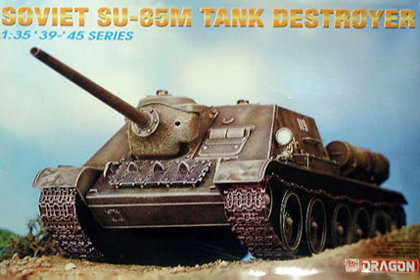
There were two versions: the basic SU-85 had a fixed commander’s cupola with a rotating periscope and three vision blocks; the improved SU-85M had the same casemate as the SU-100, with a commander’s cupola as used on the T-34-85.
This is the Tamiya 35 066-1600 kit in 1/35 scale, of the ‘Russian Heavy Tank, KV-1 Type C’.
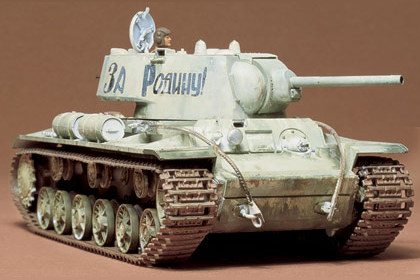
When first introduced in late 1930’s, the KVI was no doubt one of the most powerful tanks in the world, and a complete secret. It was built to be completely “bulletproof”, and was shot proof against the 37mm Anti-Tank Gun with it’s thick 100mm armor.
In the B-model, armor was increased an additional 25-35mm. The C-model used a cast turret, replacing the old plated one to increase protection.
This heavy tank, weighing around 45 tons with crew of five, was armed with 76.2mm main gun and two MGs. The armament was considered heavy for 1940, but by 1943 the main gun lacked punching power against new Panthers and Tigers. Its weight caused constant trouble with the transmission. As weight increased due to additional armor, the engine power was not increased. This caused successive models to become slower.
This is the Academy 13236 kit in 1/35 scale, of the ‘German Flakpanzer IV, Wirbelwind’.
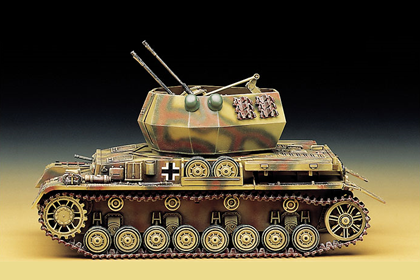
This is the Italieri 6427 kit in 1/35 scale, of the ‘Russian Medium Tank, T-55’.
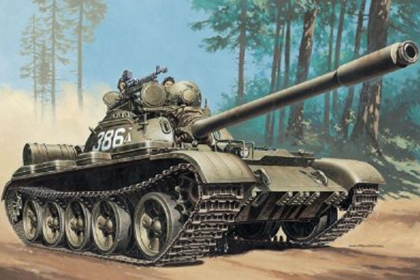
The T-54 entered full production in 1947 and became the main tank for armored units of the Soviet Army, armies of the Warsaw Pact countries, and others. T-54s and T-55s were involved in many of the world’s armed conflicts during the late 20th and early 21st century.
This is the Tamiya 35 186-700 kit in 1/35 scale, of the ‘German Fuel Drum set’.
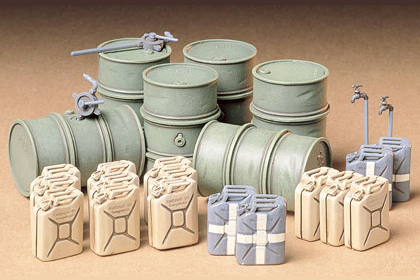
This is the Tamiya 35 291-3000 kit in 1/35 scale, of the ‘German 3 Ton 4×2 Cargo Truck’.
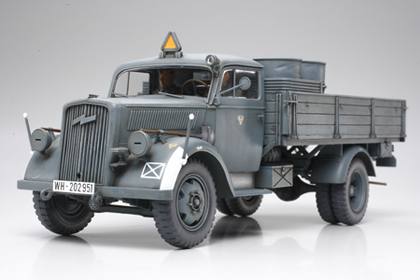
Ideal choice for German Army – The German army in WWII used a wide variety of wheeled vehicles as part of their overall strategy of fast mechanized warfare. Among the most widely used was the 3 ton 4×2 Cargo Truck, a truck design that was first produced in the 1930s. From 1937 to 1944, over 78,000 medium 3 ton 4×2 Cargo Trucks were produced and they became the most recognized German army truck in WWII.
Featuring a dependable 6-cylinder gasoline engine, the 3 ton 4×2 Cargo Truck could take on a very large payload disproportionate to its size. It also featured a durable rear wheel-drive chassis with superior off-road handling and a large cargo area, which enabled superb load-carrying capacity.
They proved to be not only extremely reliable, but also very versatile, and were employed in a wide variety of roles, including fuel truck, ambulance, radio truck, as well as general-purpose cargo truck and was until the end of war used to transport troops and supplies on all fronts.
This is the Tamiya 35 096-1800 kit in 1/35 scale, of the ‘German Panzerkampfwagen IV, Ausf. D’.
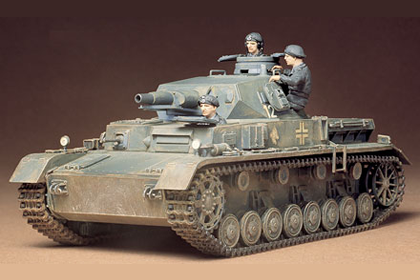
This is the Tamiya 35 181-3400 kit in 1/35 scale, of the ‘German Panzerkampfwagen IV, Ausf. J’.
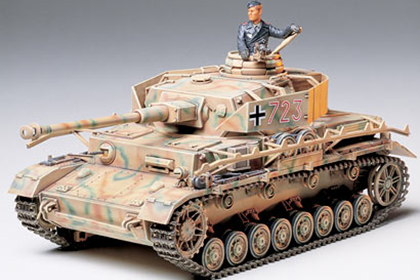
The Panzerkampfwagen IV was Germany’s most important tank during the second world war. It remained in mass production throughout the conflict, with more than 8,000 units being produced. This represented more than one-third of Germany’s total wartime tank production. It was the backbone of the Panzer Divisions and it was often referred to as their “Workhorse” The Pz.Kpfw.IV underwent constant improvement throughout its long career.
As an example, its original short-barreled 7.5cm main gun was replaced with the long barreled 7.5cm KwK40 L/43 gun beginning with the Ausf. F2 version. The further improved 7.5cm KwK40 L/48 was added to the Ausf. H onwards.In 1944 however, with the introduction of the new Panther and Tiger tanks, plus other tactical considerations, the Pz.Kpfw.IV began to serve mainly in a defensive capacity. A need was required to simplify construction and increase productivity, plus conserve scarce raw materials.
The last of the series, the Ausf. J thus had a much simpler construction, and an extra fuel tank replaced the auxiliary engine/generator. This greatly increased its range from 210km to 320km and was welcomed by the German troops, as they were having difficult with their supply, but it was attained at the expense of electric power for the turret traversing motor. The thin steel plates known as Schurzen (skirts), first introduced with the Ausf. G, were sometimes replaced with heavy gauge wire mesh, or not even used at all.
This is the Tamiya 35 091-1000 kit in 1/35 scale, of the ‘German 20mm Flakvierling 38’.
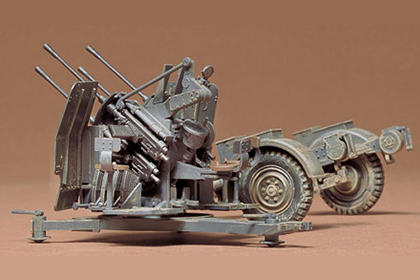
Although its purpose was to provide aerial defense against Allied aircraft attack from a grounded position, it was also seen used with trucks and other land vehicles as well on warships.
This is the Mirage Hobby 35106 kit in 1/35 scale, of the ‘Russian Light Tank, T-50AA’.
